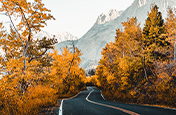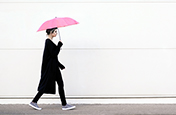LIGHTROOM
For iOS and Android

Architecture photography, inside and out.
See why architectural photographers have to consider time of day, weather and vantage points to create stunning images of cathedrals, homes, skyscrapers and more.
Advice to improve your architectural photography.
From shots of historical buildings to humble abodes, architectural photography covers photos that primarily showcase the interior or exterior of manmade structures. With subjects that are static and easily accessible, architectural photography is a natural beginning for a lot of photographers. “I think it’s a good place to start,” says photographer Nick Ulivieri. “The architecture’s already there and you can just go outside and shoot whatever you want to shoot.” You don’t need a studio or elaborate light set up, at least not for exterior shots, to capture great photos of buildings. You don’t need to direct models. Your subject is still, freeing you up to study how the setting may affect every shot. Lighting, weather and the potential angles you can shoot from are the variables that you need to consider as you begin building your architectural photography skills.
Exploring exterior shots.
You give up a lot of control when shooting the outside of a building. “The challenge with creating high-quality architectural images is knowing when and when not to shoot a certain structure,” says Ulivieri. “You're at the mercy of the building’s design, the location, the shadows and the weather.” In some forms of photography, you can control the environment to get the right shot, but with most architectural subjects it’s all about your ability to adapt.
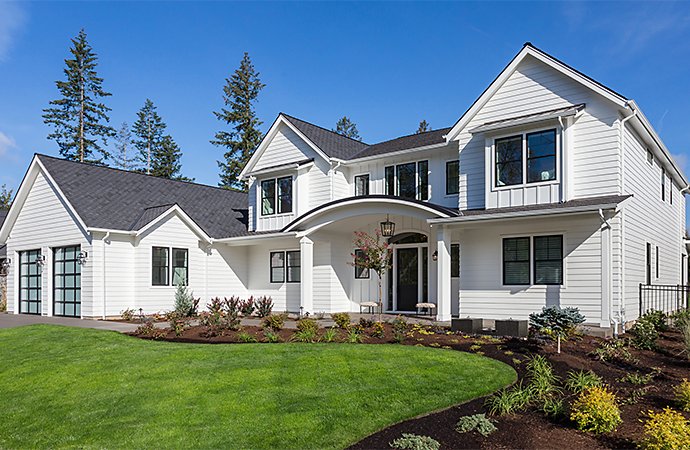

Dealing with time of day and weather conditions.
“There are two main shots. A really nice daytime photo where you’ve got a blue sky and maybe some clouds,” says Ulivieri. “And then there’s blue hour.”
Blue hour is the time just after sunset when the sky takes on a pink, blue or purple tinge and photos of buildings at that time can help highlight external lighting features while lighting up exterior aspects like facades. Plus, photos shot at blue hour may allow internal lights to give the building an inner glow. The bright lights, deep colours and dramatic contrasts of blue hour photos make these shots a popular choice for the large marquee images that often dominate websites, brochures and other assets.
While some architecture photography is artistic, many clients want to showcase buildings or real estate — for commercial purposes — on a clear day or just after sunset. For these daylight shots, avoid direct sunlight. Taking photos when the sun is overhead will result in harsh contrasts and deep shadows. “Exterior is mainly about time of day,” says photographer Kenton Waltz. “Shooting at magic hour is great, because you don’t get harsh exposure differences.” Magic hour, also known as golden hour, is about an hour after dawn or before sunset. It’s known for providing a lot of soft, warm light.
Different buildings often look better during different weather conditions and at different times of day. “If you’re doing a more brutalist structure where contrast is part of the design, you might want to shoot at high noon when you get more shadows,” Waltz says. Likewise, metal and concrete industrial structures can look especially imposing when slick with rain, old Victorian mansions can look haunting beneath an overcast sky. And if you want to emphasize the height of a skyscraper, you can choose to shoot it when the top of the building is shrouded in clouds. It’s all about seeking out the right setting for each building.
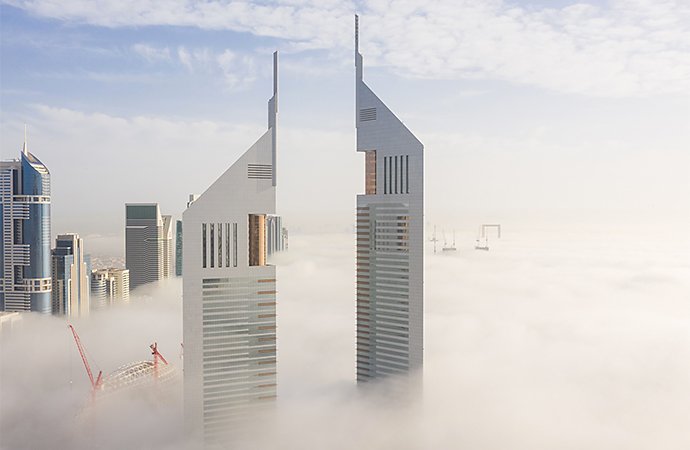
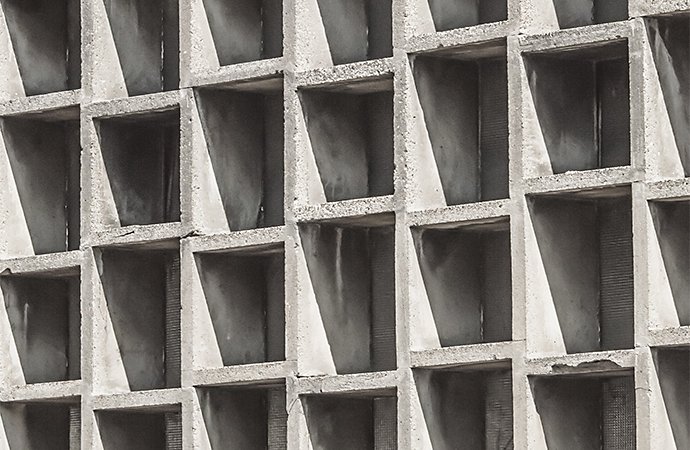
Finding the right vantage point.
Street-level photos may not provide the best angle for your subject. “If you’re shooting a skyscraper or a building taller than 30 stories, find a vantage point,” says Waltz. To avoid distortions in perspective, stand on something that’s about halfway up the height of what you’re trying to photograph. If you look up at a structure, its lines will appear to converge due to perspective. However, if you’re directly across from a building, there’s no perspective change. For especially tall buildings the right vantage point might not be anywhere on the ground or a nearby structure. “Sometimes a drone is the best option if you can’t get where you need to be,” says Waltz. If you have the budget, cranes and helicopters are an option, as well.
Getting the right equipment for architectural photography.
It doesn’t take much to get into architectural photography, but you’ll want more than just a DSLR camera to get truly great shots.
- A tripod is essential for both interior and exterior architectural photography of all sorts. A photographer will often take several shots of a subject at the same angle and height and then composite the best parts of the different photos together. “A lot of times if I’m shooting interiors, it’s very rare that I have a final photo that is one single frame,” says Ulivieri. Be ready to take a lot of photos and stitch them together in post-processing.
- Wide-angle lenses are especially useful for interior shots. Without a wide-angle lens, rooms can often appear to be smaller than they really are. Good interior photography shows the potential of the space and a wide-angle lens takes it all in.
- Tilt-shift lenses can be very useful when taking exterior shots. If you’re photographing tall buildings from a distance, the vertical lines of tall buildings can appear to fall away or forward. A tilt-shift lens allows you to maintain straight lines and perspective. If you don’t have a tilt-shift lens, it’s also possible to adjust perspective in Photoshop.
- Drones are sometimes useful for those exterior shots that don’t offer a convenient vantage point or you need to photograph out-of-the way architectural design elements at different angles.
Even with all the right equipment, the most important thing for any architecture photographer is patience. “You cannot rush these things,” says Waltz. “We might do an entire day and walk away with ten photos.” Be willing to work with the environment, weather and the building itself. It can be a slow process, but one that makes amazing images of everything from residential real estate to the biggest structures on the skyline.
Contributors
You might also be interested in…
Building a great landscape photo.
Explore ways to artistically capture scenic views with tips on landscape photography.
Getting started in real estate photography.
Begin your journey into real estate photography with these tips and insights from working pros.
Tips for capturing nature photos of all kinds.
Explore the possibilities of nature photography, from animals in motion to sprawling landscapes.
How to use and break, the rule of thirds.
Improve your photo composition skills to capture more stunning images.
